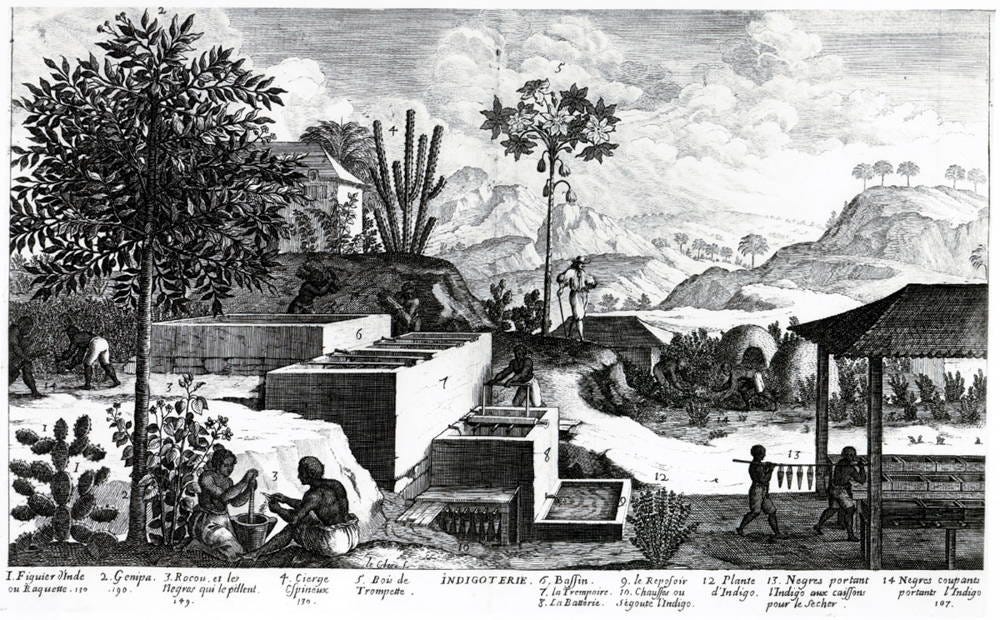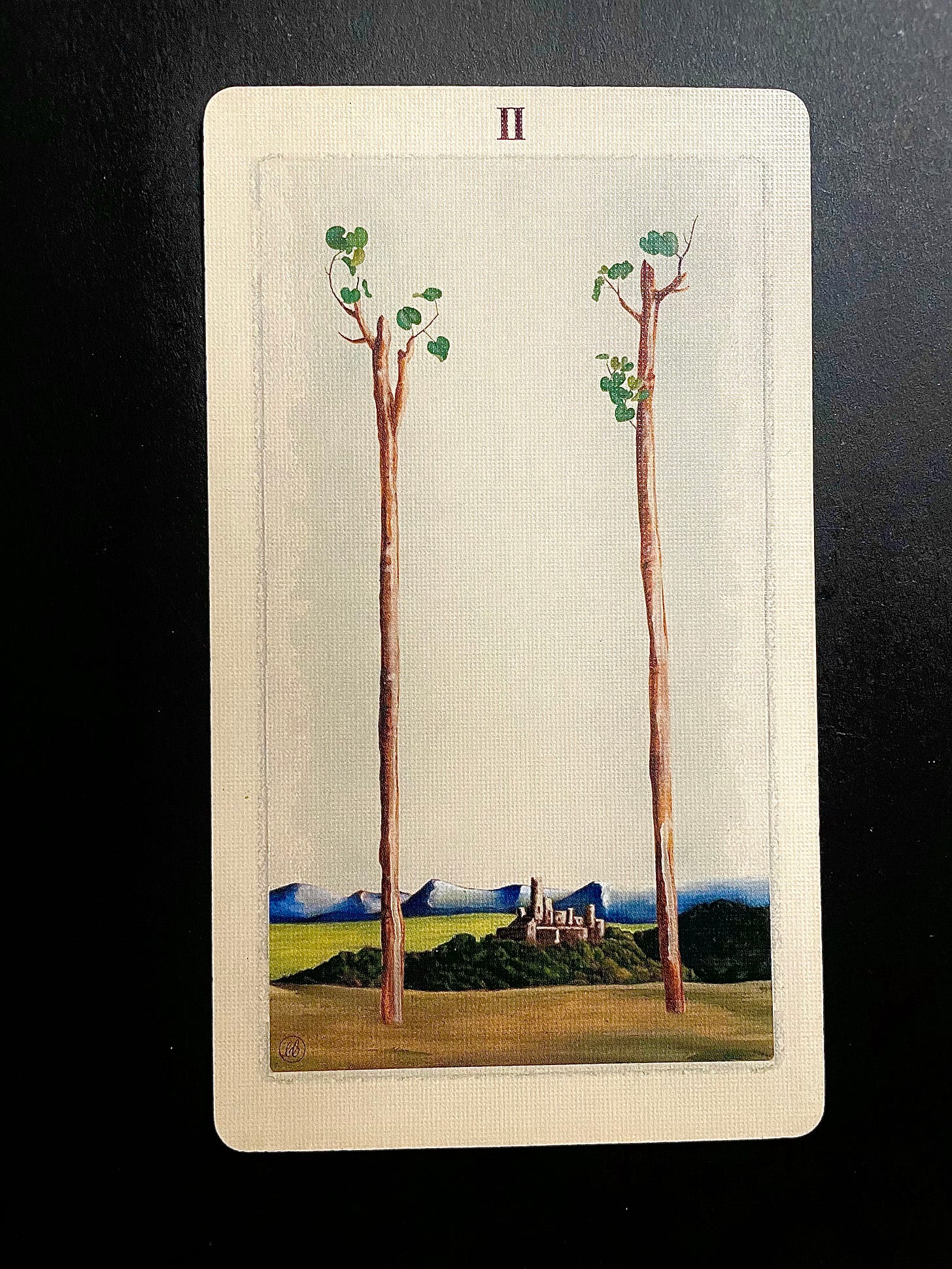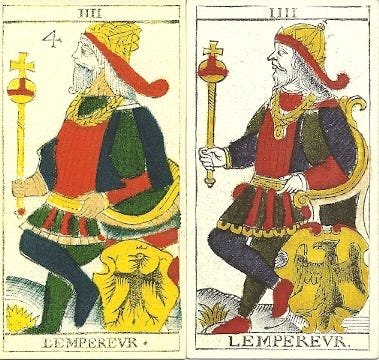
Welcome dear reader,
I write this as the Moon has just entered Aries, approaching its fullness within hours. For me personally, this lunation activates the 12th house, which is the place of prisons, the unseen, foreign countries, enmities, sorrows and slanderings, but no matter if this Aries moon is illuminating another house of your natal chart, Aries brings forth the card of dominion within the Two of Wands across the board.
Dominion determines supreme authority and by the card it depicts an imperial oversight, or what Nichloas Mirzoeff explores as visuality.
Towering above the State and its citizens, subjects, slaves and savages is the sovereign who sees and proclaims the sole right to see.

“Visuality is an old word for an old project. It is not a trendy theory word meaning the totality of all visual images and devices, but is in fact an early-nineteenth-century term meaning the visualization of history. This practice must be imaginary, rather than perceptual, because what is being visualized is too substantial for any one person to see and is created from information, images, and ideas. This ability to assemble a visualization manifests the authority of the visualizer.” - Nicholas Mirzoeff, The Right To Look
The Two of Wands is card of cartography, for it is imperial sight that maps, or visualizes, empire. Should you examine the rest of the Wands suit, and you will see a royal wedding, a soldier, a common laborer, weapons of war, a war general triumphing after a pronounced contest for power. The Two of Wands depicts the ruling class, and with its monarchical visages, their gaze refers to a visuality that sustains and certifies a centralized, autocratic leadership as it focuses on the formation of a coherent, intelligible picture of modernity, that is the globe that easily fits into their palm. That autocratic authority assumes it can easily hold, or perceive this whole globe, and thus culture and thus history. And in depicting or visualizing themselves as such they authorize their exclusive claim to be able to look.
The Twelfth House is a dark, shaded house in that it is averted from the ascendant and yet the Two of Wands is all about seeing. This is not paradoxical. It’s a function of design, a manner of relation established by carceral consciousness, that teaches inmates to be self-surveilling even as they are imprisoned and disappeared from public view. The human visual experience is a fundamentally political domain. Visuality not only sutures authority to power, it is self-justifying in making this power seem self-evident. Its devices render this association natural.
In the card the newly crowned King is examining the reach of their rule, which becomes as far their eye can see. And as they visualize their authority, culture and history, sight becomes a marker of civilization for the “civilized” could visualize, whereas the “primitive” was black and blind in the chaos of anarchy, the anthesis of “culture.” Yet the hallmark of the modern is in the manifested visualization of the ‘primitive.’1

Edward Tylor conceptualized nations as a spatialized hierarchy of cultures, presenting Darwin’s evolution theories as existing in real time with only space separating the savage from the civil.
By creating a picture of order, it creates a ‘division of the sensible’, that is the rational actors who see, say, understand, and interpret from those they imaged as irrational and illiterate, that is the indigenous, the queer.

The arcanum unlocks understandings about white, imperial modes of forecasting, mapping the world, trajectory, ambition. It is about the “nomination of the visible” as Foucault defines. Newly crowned young white kings are trained to classify, separate and segregate as they see.
More than respecting the fact that prophesy / forecasting is forreal, divinatory literacy emerges more clearly as we see the particularity of how a people prophesize, and how white sight understands the augur as such that produces a racialized labor division, and enacts an imperial circulation of extraction. Divination is about is deciphering the augur, it’s about with the clarity to see symbol and sign clearly correspond to the materiality of an enfleshed, ensouled life. The way we see has material effects. This is a process “not composed simply of visual perceptions in the physical sense, but is formed by a set of relations combining information, imagination, and insight into a rendition of physical and psychic space.”2
Overseer of Space, States and Slaves
The Emperor, Aries at large in the Major Arcana, crosses his leg into the visible four of his frame. The Emperor’s four creates rectagonal windows for human perception so that the imperceptible scale of history may be imaginable from information, images and ideas. He orders materiality by these framings. The Emperor’s four assumes the ability to assemble a visualization, or naturalizes their power by aestheticizing it, so it may seem as right and normal. Sallie Nichols writes reinforcing the aesthetic strand of what Mirzoeff refers to as the 3-strand complex of visuality in Tarot and the Archetypal Journey:
“He will carve out room for man to stand erect, will create paths for intercommunication, will oversee the building of homes, villages and cities. He will protect his empire from the inroads of both hostile nature and barbarians. In short, he will create, inspire and defend civilization.”3
Nichols is more aptly articulating colonial archetypal structures of consciousness, as she assigns him the overseer of civilization, secure in his easily embodied authority as signaled by his legs akimbo. The acumen of his divinatory sight generates his aura of authority as:
Keep reading with a 7-day free trial
Subscribe to The Red Read to keep reading this post and get 7 days of free access to the full post archives.





